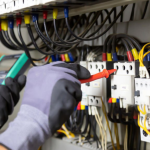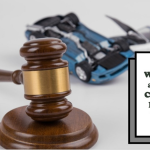Investing in real estate has exploded in Florida, and fix-and-flip loans are at the center of it all. These loans are aimed at people who purchase homes in need of repair, renovate them and then sell them for profit. Its home state of Florida is a hot market for this kind of investing. The state’s warm temperatures, expanding population and ongoing need for housing make it a perfect location for flipping homes.
But if you’re considering dipping in, it’s good to know how these loans operate — and what makes Florida a particularly interesting place to use them. Whether your goal is to complete your first project or gain expertise in fix and flip home financing over time, having the right knowledge is key. This guide will help you understand everything you need to know—how these loans work, who’s eligible, the benefits and drawbacks and what to look for in the Florida market. Whether you’re still beginning to gather or simply peering to refine your system, this article’s for you.
Fix-and-Flip Loans: How They Work and Their Popularity in Florida
A fix-and-flip loan is a short-term loan used to purchase and renovate a property. These loans generally have 12- to 18-month terms, providing just enough time for investors to complete repairs and resell the property. These loans are particularly common in Florida, where the housing market is fast-moving. Buyers often have to move quickly to land properties in hot markets, and traditional mortgages simply cannot match the pace required for this type of investing.
With a fix-and-flip loan, you receive fast funding, typically within days, enabling you to close deals quickly and stay ahead of your competitors. Lenders typically determine the amount you can borrow based on the home’s after-repair value, or ARV. That means they’re thinking about what the home will be worth after the work gets done, not what it’s worth when you purchase it. This gives you earlier access to more funds, which is useful in the case of major renovations. In faster-growing cities in Florida, such as Tampa, Orlando, and Jacksonville, this type of loan is a common remedy for real estate speculators who are seeking to move quickly while avoiding bankruptcy.
Who Can Qualify for a Fix-and-Flip Loan in Florida?
Qualifying for a fix-and-flip loan isn’t quite as tough as qualifying for a traditional mortgage, but there still are criteria you’ll have to meet. Generally speaking, lenders want to know that you’ve got some experience in real estate or, at a minimum, a good plan. They might also want to know how much of your own money you’re putting into the project. This “skin in the game” demonstrates that you’re serious and are willing to take on some of the risk.
While your credit score is important, it’s not the only thing. Some lenders will work with borrowers who have less-than-ideal credit if the deal on paper is strong. They’ll evaluate the property itself, your renovation budget and how much profit is likely on the other side of the flip. Here’s a look at what lenders generally take into account when considering your application:
- Experience level: Prior real estate or construction experience is a plus, but not required.
- Down payment: Most lenders expect the borrower to contribute a portion of the purchase or rehab costs.
- Credit history: A higher score helps, but many lenders focus more on the deal than your credit.
- Property potential: The after-repair value (ARV) of the home plays a big role in funding decisions.
- Exit strategy: A clear plan to renovate and sell within a specific timeframe builds lender confidence.
In many of the growing and transitioning markets in Florida, most lenders understand the unique needs of fix-and-flip investors. You don’t need to invest full time to qualify. Many people are starting while working other gigs. But you do need to stay organized, have a plan, and know your numbers. Having solid contractors in place, accurate repair estimates and a realistic timeline can be a game changer when seeking funding.
The Advantages and Disadvantages of Fix-and-Flip Loans
Fix-and-flip loans come with real benefits, particularly in a Florida market where timing is everything. The main benefit is speed. These loans are structured to be quick, both in approval and funding, giving you an advantage in competing for properties. And they don’t require good credit or long waiting periods like traditional mortgages do. You can have part of your application approved based on the property’s potential, rather than purely on your financial history. Flexibility is another upside. Since these loans are short-term, you aren’t committing to long repayment schedules or large commitments.
Then, when you flip the property and sell it, you pay off the loan and move on to your next project. But having said that, there are risks involved as well. The interest rates are higher than for regular home loans, and if your project goes over budget or the home takes a while to sell, you could be in trouble. Florida’s market can turn on a dime, and surprise expenses such as permits or storm damage can dig into your profits. You will also have to be prepared to guide the process from beginning to end. These loans aren’t for “set it and forget it” types. They need hands-on attention and regular supervision. Yet for many investors, the potential rewards exceed the risks, particularly in a bull market.
Today, We’re Discussing Fix-and-Flip Investing in Florida
Florida has some unique characteristics that make it both appealing and challenging for fix-and-flips. The weather is one of them. Because the climate is warm year-round here, renovations can proceed without weather delays, which is a bonus. But it also just so happens to coincide with hurricane season. Houses in some areas might require extra insurance, sturdier materials or permitting that can cause delays. Then there’s the domestic market.
Tampa and Miami, for example, have experienced major growth in recent years, but competition is also heated. It is important to understand your neighborhoods in those places. Property values can vary widely between blocks, even within blocks that are just a few streets apart. Knowing about zoning laws and HOA rules is also significant. Florida has lots of old homes, condos and new builds that all have their regulations. Taxes can also differ depending on the county, so it’s wise to include those in your calculations.
Another factor to consider is the type of buyer you’re going after. Most of the people relocating to Florida are retirees, snowbirds, or remote workers seeking something move-in ready. That means your renovation decisions need to align with what’s genuinely selling — updated kitchens, tidy bathrooms and low-maintenance landscaping. To attract the widest pool of buyers, keep things neutral and functional.
Lynn Martelli is an editor at Readability. She received her MFA in Creative Writing from Antioch University and has worked as an editor for over 10 years. Lynn has edited a wide variety of books, including fiction, non-fiction, memoirs, and more. In her free time, Lynn enjoys reading, writing, and spending time with her family and friends.















